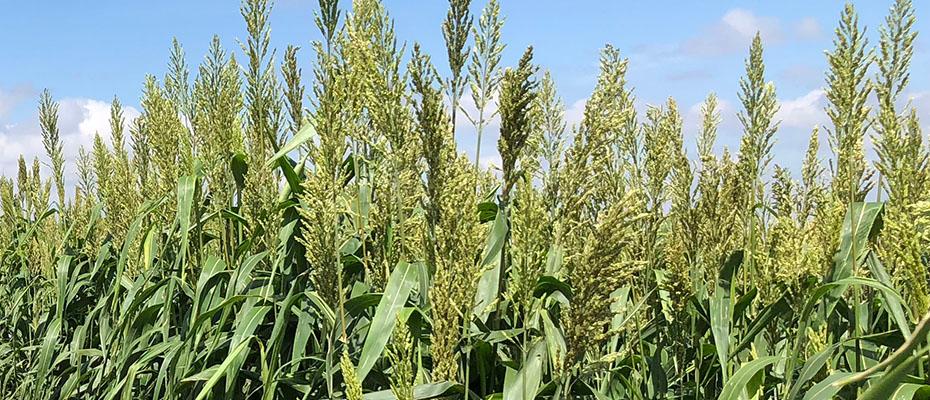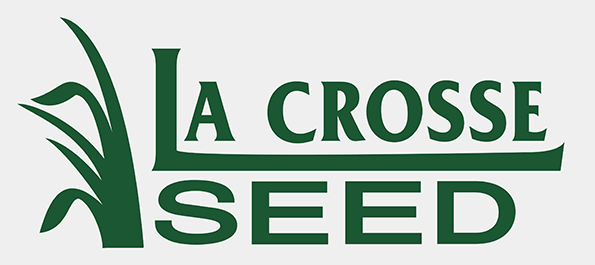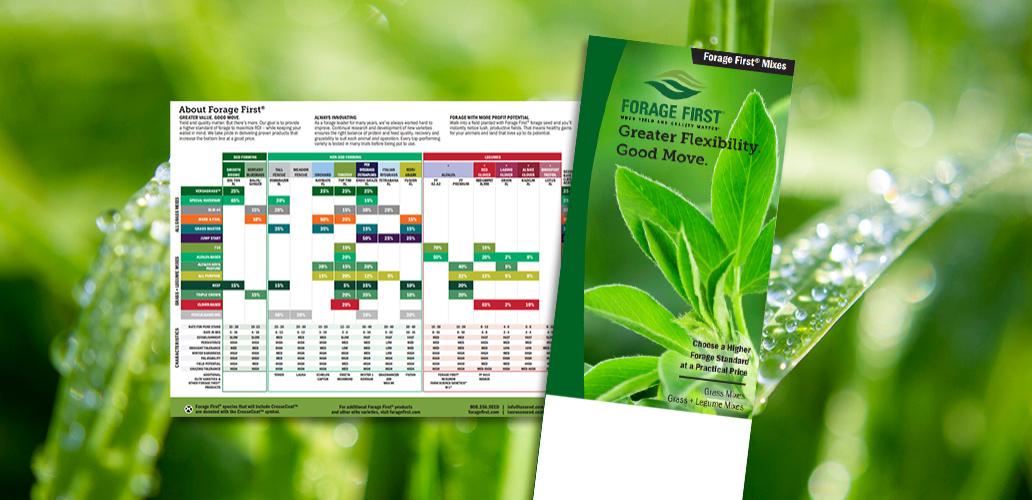Forage First Guide I Summer Select Guide
Greater Value. Good Move. Yield and quality matter. But there’s more. Our goal is to provide a higher standard for forage to maximize ROI– while keeping your wallet in mind. We take pride in delivering proven products that increase the bottom line at a good price.

Summer Select Dense Tonnage BMR BD sorghum x sudangrass is one of the most management friendly sorghum x sudangrass hybrids on the market. Dense Tonnage BMR BD is what the name suggests, a brachytic dwarf BMR 6 sorghum x sudangrass that allows a tighter cutting or grazing height while expressing tillering and regrowth capabilities, all while providing very high quality feed with yields equal to or higher than most taller plants.
CHARACTERISTICS:
1 = Poor; 5 = Excellent
BMR (Brown Mid-Rib): BMR 6
Traits: Brachytic Dwarf
Maturity: Medium Late
Seedling Vigor: 4
Recovery After Cutting: 4
Leaf Disease Resistance: 4
Sugarcane Aphid Tolerance: 1
Double Crop: 4
Single Silage Cut: 4
Rapid Dry Down: 2
Uses:
-
- Grazing – recommended begin height is 18-20 in. with stop height of 4-6 in.
- Hay/Baleage – the large number and size of leaves make Dense Tonnage BMR BD a superior hay/baleage product
If desired, this product can be planted in rows and harvested similar to a forage sorghum or silage corn: 30 in. rows = 2-3 lbs./acre.
SEEDING:
Planting Time:
May-July
Emergence (days): 10
Seeding Information:
- Soil temperature of 60 F and climbing
- Average seeds/lb.: 14,000-15,000
- Planting depth should be 3/4-1½ in., depending on soil moisture
- Follow recommended seeding rates for your area:
Higher moisture areas: 25-35 lbs./acre
High plains (lower moisture): 15-25 lbs./acre
- Can be no-tilled into the stubble of winter and spring crops
- Works great following cereal grain productions
- Do not plant in soil with pH greater than 7½ as iron chlorosis can be a problem
MANAGEMENT:
Fertility:
- Please test your soil!
- Under favorable conditions, 1-1½ lbs. of nitrogen per day of planned growth should be available for ultimate growth, with little risk for nitrate poisoning. For example, for a planned 40 day harvest, 40-45 lbs. of nitrogen should be available.
- Potassium levels should be maintained similar to that of corn
- If soil pH is greater than 7.2, an application of iron may be necessary
to prevent iron chlorosis
Avoiding Nitrate and Prussic Acid Poisoning:
- Do not harvest drought stricken plants within four days following a heavy rain
- Do not apply nitrogen prior to expected drought periods
- If in doubt, cut at higher stubble height as nitrates tend to accumulate in the lower stalk
- If high prussic acid is found, wait one month prior to feeding. Unlike excessive nitrates, prussic acid will escape from the plant over time.
Harvest:
- First cutting: for best quality, plan to harvest within 40 days of growth and less than 40 in. of growth
- Cutting height: for optimum regrowth, crop should be harvested leaving 2 nodes or approximately 6-8 in. of plant material
- Use sharp blades: a clean cutting will enhance regrowth
- Sorghum species dry down slowly due to the bloom found on the plant: it is advised to swath the harvested crop, wilting to desired moisture level before picking up for storage
- Quality levels, including NDFd and protein, will decline if crop is harvested after flowering
- Harvest during vegetative growth to insure ultimate forage quality
- For highest energy levels, harvest crop at flag leaf stage after day length has dropped below 12 hrs. 20 mins. Sugar formulation in sorghum stalks will be at their highest levels from this stage until grain formation depending on seeding date, height of plants may present challenges for harvest.
Ratings
Scale 1-9, where 9 = best or most pronounced
SC Aphid Tolerance
Disease Resistance
Cutting Recovery
Double Crop
BMR (Brown Mid-Rib)
- Management friendly hybrid with with greater harvest flexibility
- Dwarf hybrid = improved standability & higher leaf:stem ratio
- Suitable for grazing environments or 1-cut silage systems
- Increased sugar content = improved digestibility

.png)
.png)


.png)










